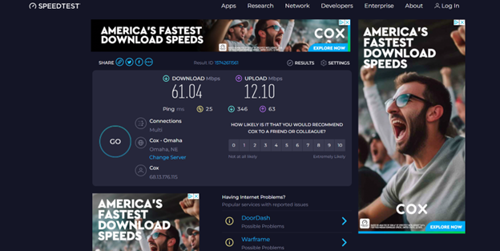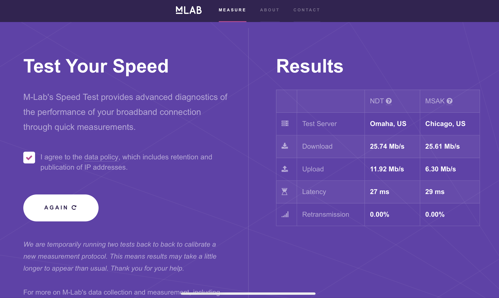Challenge Evidence
Evidence is required to support all challenges
Residents and business owners must supply evidence to the Advocate to support a challenge. Below are types of acceptable evidence by challenge type.
When submitting a challenge or rebuttal, submit the strongest evidence available to support your case. Challenges that do not meet the minimum standards of evidence will be rejected. All evidence must be documented (letter, email, screen shot, etc.). Please do not hesitate to reach out with questions to ndot.broadbandoffice@nebraska.gov.
A matrix of all 11 types of challenges is here: Challenge Types Document
*All evidence provided may be shared with the Nebraska Broadband Office (NBO), its contractors and internet service providers.
Availability (A) (A provider listed on the map is not available at this location or a provider is not listed at a location where service is available)
Evidence to dispute:
-
-
- Screenshot of provider webpage showing it is not available to that location.
- A service request was refused within the last 180 days (e.g., an email or letter from provider).
- Lack of suitable infrastructure (e.g., no fiber on pole).
- A letter or email dated within the last 365 days that a provider failed to schedule a service installation or offer an installation date within 10 business days of a request.
- A letter or email dated within the last 365 days indicating that a provider requested more than the standard installation fee to connect this location or that a Provider quoted an amount in excess of the provider’s standard installation charge in order to connect service at the location.
-
Speed (S) (Speed listed on map is not accurate)
Evidence to dispute:
Speed test evidence:
-
-
-
- Must provide three speed tests taken on three different days in the same seven day period
- Cannot be dated prior to Jan. 15, 2023
- Identify the name of subscriber, street address, and a certification of the speed tier subscribed to (e.g., a copy of the customer's last bill)
- Copies or screenshots of a speed test performed on a laptop or desktop computer within immediate proximity of the residential gateway (router), using either of the two below speed test services:
-
-
-
-
- Ookla: https://www.speedtest.net/

- Ookla: https://www.speedtest.net/
-
- M-Lab: https://speed.measurementlab.net/

- Use the NDT speeds when submitting your challenge.
- M-Lab: https://speed.measurementlab.net/
-
Latency (L) (NTIA limit for latency is <100 ms)
Evidence to dispute:
-
-
- Copy or screenshot of test showing the latency of the broadband service exceeding 100 ms.
- Speed tests can be performed on the same platforms as the speed test.
- Ookla references latency as "ping"
-
Data Cap (D) (A provider is imposing a cap of ≤660 on the data available)
-
-
- A screenshot of the provider's webpage.
- Written service description from the provider to the consumer.
-
Technology (T) (The technology listed on the map is not provided at this location)
-
-
- The manufacturer and model number of the residential gateway (your router or modem, whatever device connects you to the internet) demonstrates the service you receive is a different technology than what the map lists.
-
Business Service Only (B) (The location is residential, but the service offered is only available to businesses)
-
-
- Screenshot of the provider webpage displaying the business service option.
-
Enforceable Commitment (E) (The challenger knows of another program committed to deploying broadband to the area by June 30, 2025)
-
-
- Enforceable commitment by the service provider (e.g., authorization letter).
-
Planned Service (P) (The challenger knows that broadband will be deployed at this location by June 30, 2025)
-
-
- Construction contracts or other evidence of ongoing deployment.
- Contracts or a similar binding agreement between the provider and a unit of state or local government. (Must still meet the speed and reliability requirements set out by BEAD)
-
Not Part of an Enforceable Commitment (N) (The challenger knows that less than 100% of the locations within an enforceable commitment will be covered)
-
-
- Declaration by service provider subject to the enforceable commitment. See BEAD NOFO page 36, footnote 52 for further information.
-
Location is a CAI (C) (The location is a school, library, health clinic, health center, hospital or other medical provider, public safety entity, institution of higher education, public housing organization, or community support organization)
-
-
- Evidence that the locations fits the definition of a CAI.
-
Location is not a CAI (R) (The location is currently labeled as a CAI but is not a functioning school, library, health clinic, health center, hospital or other medical provider, public safety entity, institution of higher education, public housing organization, or community support organization)
-
-
- Evidence that a location does not fit the definition of a CAI or is no longer in operation.
-
